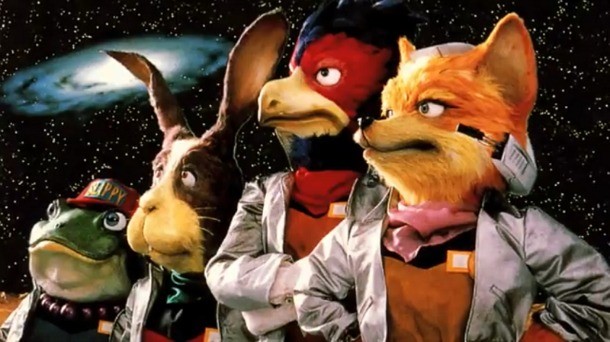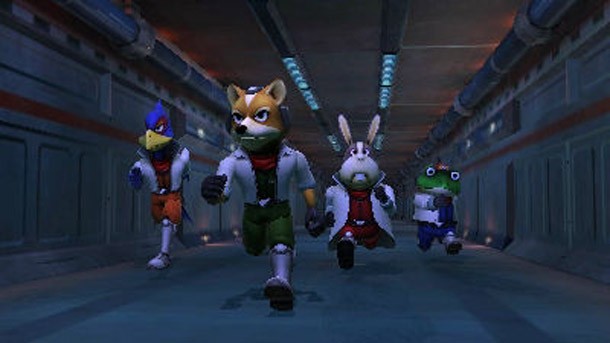Our extra-large special edition is here. Subscribe today and receive the 25% longer issue at no extra cost!
Opinion – Star Fox Gimmicks Grounded A Once-Proud Fighter

Star Fox holds a special place in the hearts of many due to its exciting aerial combat, colorful characters, and impressive boss battles that captivated their imaginations during gaming’s formative years. The franchise, once acclaimed for its fluid controls and branching story paths, has recently become more notorious for its failed follow-ups.
A prevailing issue for Star Fox has been attempts to implement unnecessary gimmicks. Nintendo’s unflinching insistence to innovate could be seen as the reason for the poorly-received follow-ups over the past 15 years, but looking back, the Star Fox franchise has always experimented with new technology, control schemes, and directions. The difference between success and failure lies in whether or not those new ideas add to the experience.
With the original Star Fox in 1993, Nintendo touted its use of the Super FX chip, a 3D graphics accelerator that allowed for the impressive visuals and effects of the game on the Super Nintendo. Using the chip, Star Fox defied estimations of what was possible on the system and delivered an experience that became a showpiece title for the hardware.
The Super FX chip was eventually used in a few other games in the SNES lineup, including Vortex and Stunt Race FX. A version of the chip was also to be used in Star Fox 2, but the game was canceled late in the development cycle. While Star Fox 2 was in development, the Virtual Boy, an entire system built around a gimmick, featured a Star Fox demo that never became more before the doomed system met its end.
Star Fox 64, the first released sequel, also represented a leap in new technology. While the Nintendo 64 was much more capable of natively handling the 3D graphics a game like Star Fox demands, the developers wanted to make it even more immersive. The team accomplished this through the N64 Rumble Pak, a peripheral that hooked up and vibrated your controller to correspond with the action on-screen.
The rumble functionality adds to the intensity of the game and became so integral to the Star Fox 64 experience that whenever I didn’t have the accessory attached, it felt strange – like something was missing. The Rumble Pak inspired the future generations of controllers to have vibration features built in; today it’s standard functionality for gamepads.
Following the mainstream success of Star Fox 64, fans clamored for a new entry for the more powerful GameCube. What fans initially got was not exactly what most had wanted. Rather than developing a space-combat game from the ground up, Nintendo transposed an in-development Nintendo 64 Expansion Pak game by developer Rare called Dinosaur Planet to feature Star Fox characters.

Star Fox Adventures is a solid action game in its own right and reviewed well, but the teasing nature of the brief Arwing sequences became a sore spot for fans. After all, these were what fans wanted in a new Star Fox, and they were such a small portion of the experience. Deviating from a beloved series’ traditional formula isn’t necessarily a bad thing, but it was a strange move following the success and fanfare Star Fox 64 experienced on Nintendo’s previous console. While it didn’t have a major outstanding ploy, it heavily eschewed expectations by taking a game that was originally not even a part of the Star Fox series and throwing those characters into it, souring fans on it.
Star Fox: Assault was set to be the game that brought back the classic Star Fox formula. Developed by Namco, Assault marked the first time two games released on the same console. While Assault kept the Arwing portions more in the forefront, Namco made the disappointing on-foot sections prominent. Once again, the formula was changed and worse off for it.
Following the two releases on GameCube, Star Fox transitioned to the handheld realm for a pair of releases. Star Fox: Command uses perhaps the riskiest idea yet: touch controls. Drawing paths for your squadmates before the action unfolds is an interesting idea, but by relying 100 percent on touch controls, it turned off a large portion of players, despite overall positive reviews.
With the 2011 remaster of Star Fox 64 for 3DS, Nintendo stayed fairly traditional with its port. The two gimmicks it did implement – motion tracking and 3D – were easily deactivated, and by most accounts, Star Fox 64 3D is a great port of a beloved game. Because of this, fans had high hopes that Star Fox Zero would finally be the traditional experience they have been wanting.
The Wii U reboot of the franchise does more to walk along the traditional path in how the game flows and the stages are designed, but once again, gimmicks are introduced to the detriment of the overall experience. Wanting to capitalize on the unique capabilities of the Wii U, Nintendo not only added second-screen features like a cockpit view that is sometimes required as the TV screen view changes to become impossible to use independently, but also through motion controls used for aiming.
The motion controls require that you constantly recalibrate during the course of any given level, but their biggest sin is they cannot be switched off. Most games that have used motion controls on both Wii U and 3DS – whether you’re talking Splatoon, Ocarina of Time 3D, or even Star Fox 64 3D – have included the option to switch to traditional controls. Star Fox Zero forgoes that option and requires you to use the less conventional control schemes.
The best way for Nintendo to remedy this is to perhaps go back to what made Star Fox special in the first place. Strip away the shoehorned ideas and focus on delivering a pure, on-rails aerial combat game that feels like a true continuation of the early games of the franchise. Although games have evolved dramatically since the days of Star Fox and Star Fox 64, it’s unlikely big fans of the series’ glory days would have much of a problem with a release that’s nothing more than a prettier, smoother (and maybe slightly longer) successor to those retro hits.

Get the Game Informer Print Edition!
Explore your favorite games in premium print format, delivered to your door.
- 10 issues per year
- Only $4.80 per issue
- Full digital magazine archive access
- Since 1991









